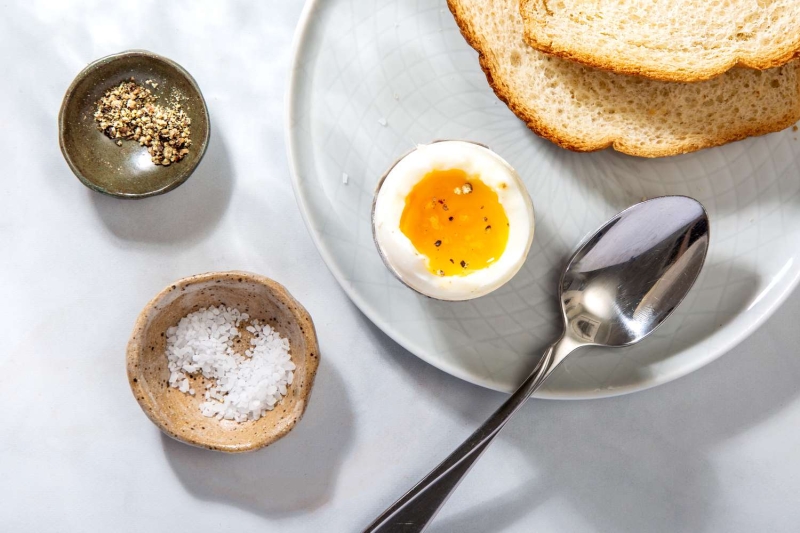Two Techniques That Work Every Time
Whether dipped with toast or sliced open over a bowl of steamy ramen, a soft-boiled egg is one of life's simplest indulgences. A perfect soft-boiled egg is quite simple—it should have a just-set white and a warm, jammy yolk—but getting to perfection requires the right technique.
What Is a Soft-Boiled Egg?
True to its name, a soft-boiled egg is one that's cooked in simmering water until the white is just set, but the yolk is still runny.
Because the cooking time for a soft-boiled egg is around 3 to 4 minutes, it's often referred to as a "3-minute egg" or "4-minute egg," depending on your preferences.
The one minute makes a difference! With the former, there may be a slight amount of unset white around the yolk; with the latter, the white is fully set.
Two Foolproof Techniques for Perfect Soft-Boiled Eggs
To cook soft-boiled eggs, you’ll need a pot of water, a slotted spoon, and a colander.
Technique A: Boiling Water Start
- Bring a pot of water to a boil.
- Gently place the eggs in the water. When the water comes back to a boil, lower it to a simmer.
- Simmer for 3 to 4 minutes.
- Remove with a slotted spoon. Transfer to the colander, place under cold running water to stop the cooking, and serve warm.
Technique B: Cold Water Start
- Place the eggs in an empty pot and cover with cold water.
- Bring it to a boil, then lower to a simmer and cook for 1 minute.
- Remove and drain as described above.
Note that these cooking times assume that the eggs are at room temperature when they go into the water. If you cook your eggs straight from the fridge, they'll need more time:
- 5 to 7 minutes using Technique A
- or 3 to 5 minutes using Technique B
How To Bring Eggs to Room Temperature
To get your eggs to room temperature, either let them sit on the counter for an hour or immerse them in warm water for 5 minutes.
Is It Okay to Eat Undercooked Eggs?
When consuming certain undercooked foods like a runny egg, there's always a risk of getting a foodborne illness such as salmonella.
If you’re serving the elderly, the very young (like children under five), a pregnant person, or anyone with a compromised immune system, you may want to opt for fully-cooked eggs. You can also use pasteurized eggs for any egg preparations that yield a runny yolk, like poached, over-easy, or sunny-side up eggs.
Whatever You Do, Don't Use the Microwave
The microwave is a wonderful tool. You can actually cook a decent poached egg in one. What the microwave is not a good for is cooking soft-boiled eggs because heating whole eggs can cause them to explode.
And they don't just explode in the microwave. No, whole eggs cooked in the microwave explode when you try to crack them, which means they'll explode right in your face!
Needless to say, it's far safer to avoid the microwave all together.
How to Serve Soft-Boiled Eggs
Because the egg white of a soft-boiled egg is just set, attempting to peel it will most likely yield a shapeless, runny egg.
Instead, soft-boiled eggs are typically served by slicing off the top of the shell, then scooping out the scrumptious, silky-smooth egg within with a spoon, or simply dipping your toast triangles or "soldiers" (toast cut into rectangular strips) into it. It's helpful to use an egg cup, which holds the egg upright while you do the slicing and eating.
Ways to Enjoy a Soft-Boiled Egg
If you cook your egg a bit more on the firm side, with a fully set white and a runny or fudgy yolk, you can peel the eggs and use them to dress up many dishes:
- Avocado Toast
- Miso Ramen
- Rabboki
- Edamame Mixed Rice
- Kimchi Fried Rice


